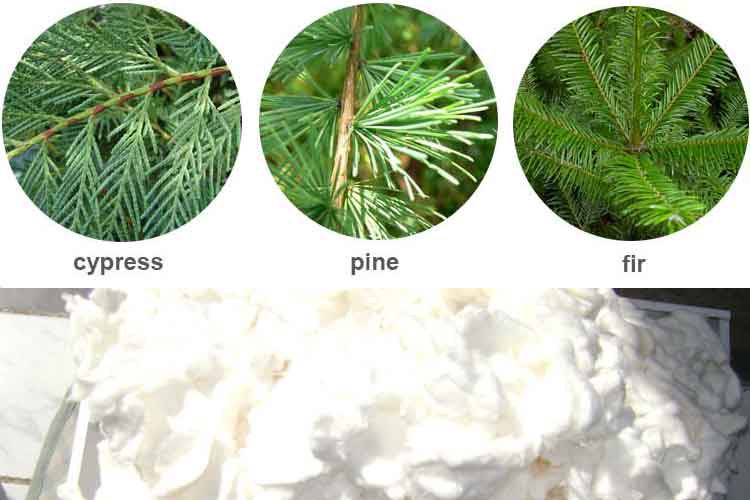-
Hardwood pulp? Softwood pulp?
Pulp is a fibrous material, processed from plant materials, with the main purpose of making paper. The paper industry uses a wide variety of woods with different properties. During the production process, depending on the technical requirements and properties set forth, the manufacturer will combine different types of wood and at the same time undergo mechanical and chemical treatment to obtain the finished paper of the desired standard.
Based on the source of raw wood, it is divided into 2 types of pulp:
Softwood pulp: The pulp is produced from soft wood materials (which are conifers, round fruits, and green trees all year round), such as conifers, cypresses, pines, pink firs, and pine,… Pulp from softwood trunks has good flexibility, creating the properties of paper strength, such as tensile strength, burst resistance, tear resistance….
Mostly, softwoods grow in high areas. Finland, Canada, and Sweden are the main softwood pulp producers worldwide.

Softwood trees and softwood pulp
Hardwood pulp: Hardwood is usually large in size and heavy in weight, prone to warping, cracking and difficult to work with. Pulp is produced from hardwood trees (which are large-leaved trees that fall in autumn and spring), such as oak, birch, eucalyptus, willow, banyan, oil, etc. Hardwood pulp has low strength, loose paper quality, strong absorption, creating the following characteristics: hardness, thickness, brightness, opacity, smoothness, printability… of the paper.

Hardwood tree and hardwood pulp
-
Difference between hardwood pulp and softwood pulp
Under the same conditions, softwood pulp is generally more expensive than hardwood pulp because the growth cycle of a softwood tree is significantly longer than that of a hardwood tree, resulting in higher energy consumption and higher production costs of softwood pulp.

In addition, hardwood pulp and softwood pulp have some other differences such as:
- Fiber: Softwood fibers are long, thin and pure, containing few impurities; hardwood fibers are short and thick, containing many impurities.
- Lignin composition: The lignin content of hardwood is about 20-40% less than that of softwood, so hardwood is easier to pulp and bleach, and needs to consume less alkali.
- Wood density (Dense density): closely related to pulp quality. Hardwoods have a higher density than softwoods.
- Application: Softwood pulp is an excellent material for making paper, often used to produce text printing paper, map printing paper, industrial paper… Compared with softwood pulp, hardwood pulp is inferior, but still a fine pulp paper type, mainly mixed with softwood pulp and used in the production of coated paper, light coated paper…
The use of the word “hardwood” or “softwood” is only used to refer to the name of the tree or the name of the wood. In fact, there are some trees that are softwood but still harder than hardwood trees and vice versa.
